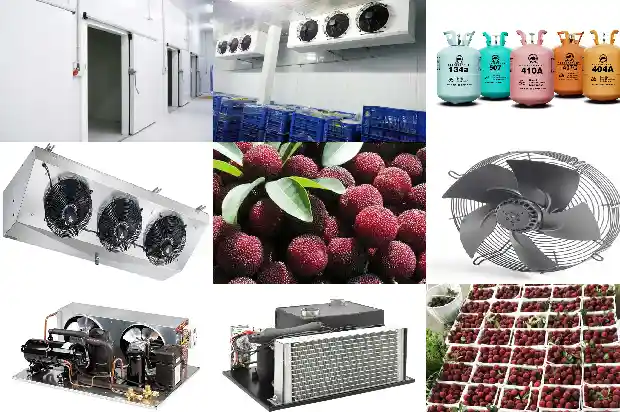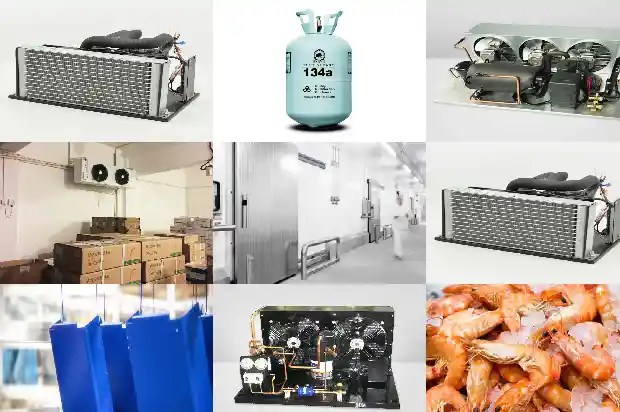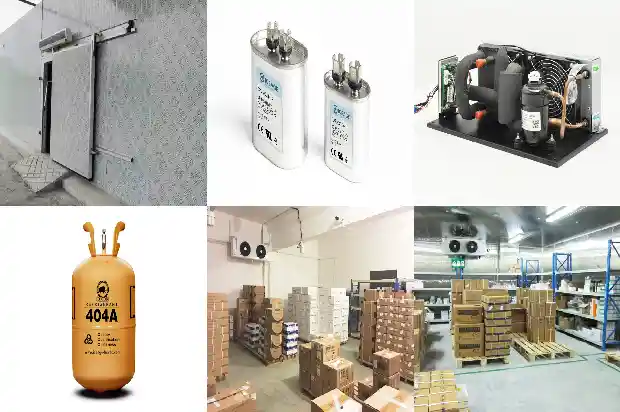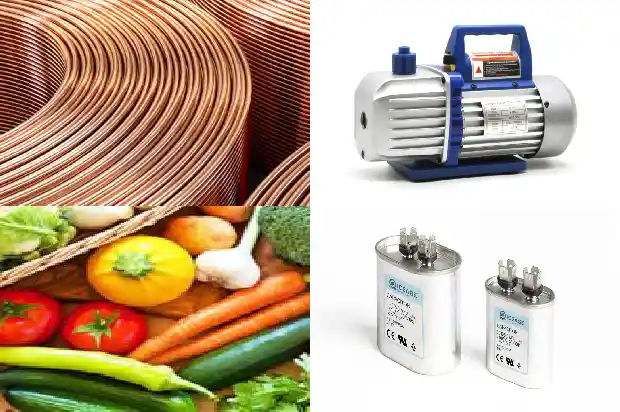Screw Chiller Units and Centrifugal Chillers
2025-03-02
Water machines are generally divided into the following categories: screw chiller units, centrifugal chiller units, water-loop heat pump units, plate-tube evaporative condensing screw chiller units, and cool storage air conditioners.
The four major brands of water machines: Trane, York, Carrier, and McQuay.
The four major brands of water machines: Trane, York, Carrier, and McQuay.
- Screw chiller units are named as such because they use screw compressors. The refrigerant in a gaseous state coming out of the evaporator of the unit is adiabatically compressed by the compressor and then becomes in a high-temperature and high-pressure state.
The compressed gaseous refrigerant is cooled and condensed at a constant pressure in the condenser, and after condensation, it changes into a liquid refrigerant. Then, it expands through the throttle valve to a low pressure and becomes a gas-liquid mixture. Among them, the liquid refrigerant under low temperature and low pressure absorbs the heat of the cooled substance in the evaporator and becomes a gaseous refrigerant again. The gaseous refrigerant re-enters the compressor through the pipeline and starts a new cycle. These are the four processes of the refrigeration cycle, and also the main working principle of the screw chiller unit.
- Classification according to the different screw refrigeration compressors used:
① Screw refrigeration compressors are divided into two types: twin-screw and single-screw.
② According to the condensation method, they are also divided into water-cooled screw chiller units and air-cooled screw chiller units.
③ According to the sealing structure form of the compressor, they are divided into open type, semi-hermetic type, and fully hermetic type.
④ According to the air conditioning function, they are divided into single cooling type and heat pump type.
⑤ According to the different refrigerants used, they are divided into two types: R134a and R22.
⑥ According to the different structures of the evaporator, they are divided into ordinary type and flooded type. - Key points for product selection:
① The main control parameters of the screw chiller unit are the refrigeration performance coefficient, rated refrigeration capacity, input power, and refrigerant type, etc.
② The selection of the chiller unit should be considered according to the cooling load and its purpose. For refrigeration systems with a long operating time under low-load conditions, it is advisable to select multi-head piston compressor units or screw compressor units, which are convenient for adjustment and energy saving.
③ When selecting a chiller unit, give priority to units with a higher performance coefficient value. According to statistical data, generally, the operating time of a chiller unit at 100% load throughout the year accounts for less than 1/4 of the total operating time. The proportion of operating time at 100%, 75%, 50%, and 25% load within the total operating time is approximately 2.3%, 41.5%, 46.1%, and 10.1% respectively. Therefore, when selecting a chiller unit, models with a relatively flat efficiency curve should be given priority. At the same time, when designing and selecting, the adjustment range of the load of the chiller unit should be considered. Multi-head screw chiller units have excellent part-load performance and can be selected according to the actual situation. - When selecting a chiller unit, attention should be paid to the conditions of the nominal working condition. The actual cooling capacity of the chiller unit is related to the following factors:
a) The outlet temperature and flow rate of the chilled water;
b) The inlet temperature, flow rate, and fouling coefficient of the cooling water. - When selecting a chiller unit, attention should be paid to the normal working range of the unit model, mainly that the current limit value of the main motor is the current value of the shaft power under the nominal working condition.
- In the design and selection, attention should be paid to:
Under the nominal working condition flow rate, the outlet temperature of the chilled water should not exceed 15°C, and the outdoor dry bulb temperature of the air-cooled unit should not exceed 43°C. If it is necessary to exceed the above range, it should be understood whether the application range of the compressor allows it and whether the power of the equipped main motor is sufficient.
- The centrifugal chiller unit uses electricity as the power source. The Freon refrigerant evaporates in the evaporator to absorb the heat of the coolant water for refrigeration. The wet Freon vapor after evaporating and absorbing heat is compressed into a high-temperature and high-pressure gas by the compressor, and after being condensed by the water-cooled condenser, it becomes a liquid. It passes through the expansion valve for throttling and enters the evaporator for recycling. Thus, chilled water at 7°C - 12°C is produced for air conditioning at the terminal of the air conditioner.
① The cooling capacity attenuation of the centrifugal chiller unit is mainly caused by the water quality: Both the condenser and the evaporator of the unit are heat exchangers. If the heat transfer pipe wall is scaled, the refrigeration capacity of the unit will decrease. However, during the design process of the manufacturer for the condenser and the evaporator, convenience for cleaning has been considered. With the long-term use, the cooling capacity attenuation is very little, almost negligible.
The average service life of the centrifugal compressor is 75,000 hours. The Freon and oil of the unit have been added already, and the user can use it by connecting the water and electricity on-site.
The unit does not require major overhauls, only the cleaning of the water system, and the maintenance cost is low. It passes through the expansion valve for throttling and enters the evaporator for recycling. Thus, chilled water at 7°C - 12°C is produced for air conditioning at the terminal of the air conditioner.
The main control parameters of the centrifugal chiller unit are the refrigeration performance coefficient, rated refrigeration capacity, input power, and refrigerant type, etc.
The selection of the chiller unit should be considered according to the cooling load and its purpose. When selecting a chiller unit, give priority to units with a higher performance coefficient value. When designing and selecting, generally, it should be selected according to the maximum cooling capacity that may be required under extreme conditions.
According to statistical data, generally, the operating time of a chiller unit at 100% load throughout the year accounts for less than 1/4 of the total operating time. The proportion of operating time at 100%, 75%, 50%, and 25% load within the total operating time is approximately 2.3%, 41.5%, 46.1%, and 10.1% respectively.
Therefore, when selecting a chiller unit, models with a relatively flat efficiency curve should be given priority. At the same time, when designing and selecting, the adjustment range of the load of the chiller unit should be considered.
When selecting a chiller unit, attention should be paid to the conditions of the nominal working condition. The actual cooling capacity of the chiller unit is related to the following factors:
a) The outlet temperature and flow rate of the chilled water.
b) The inlet temperature, flow rate, and fouling coefficient of the cooling water.
When selecting a chiller unit, attention should be paid to the normal working range of the unit model, mainly that the current limit value of the main motor is the current value of the shaft power under the nominal working condition.
In the design and selection, attention should be paid to: Under the nominal working condition flow rate, the outlet temperature of the chilled water should not exceed 15°C, and the outdoor dry bulb temperature of the air-cooled unit should not exceed 43°C. If it is necessary to exceed the above range, it should be understood whether the application range of the compressor allows it and whether the power of the equipped main motor is sufficient.
Related Articles
- What Are the Common Causes of High - pressure Faults in Chillers?
- What Are the Differences Between Chillers and General Water - cooled Equipment?
- Operation of Screw - type Water - cooled Chiller Units
- Common Faults and Solutions of Central Air - conditioning Chiller Units
- Maintenance Strategies for the Working Cycle and Electrical Automatic Control of Chillers
- What are Refrigeration Equipment? What's the Principle of Chillers?
- Common Faults of Industrial Chillers
- Can You Solve These 4 Common Issues of Industrial Chillers?
- Common Faults and Corresponding Solutions of Chillers During Use
- How to Install and Maintain Industrial Chillers?
- How to Clean a Chiller?
- Introduction to Lithium Bromide Absorption Chillers
- 8 Maintenance Procedures for Industrial Chillers
- Common Issues in Chiller Operation and Solutions
- Effective Measures to Prevent Compressor Failures in Industrial Chillers
- Reference Points for Selection of Screw - type Chillers
- How to accurately choose water-cooled and air-cooled chillers?
- Water-cooled Screw Chiller: Operation and Maintenance
